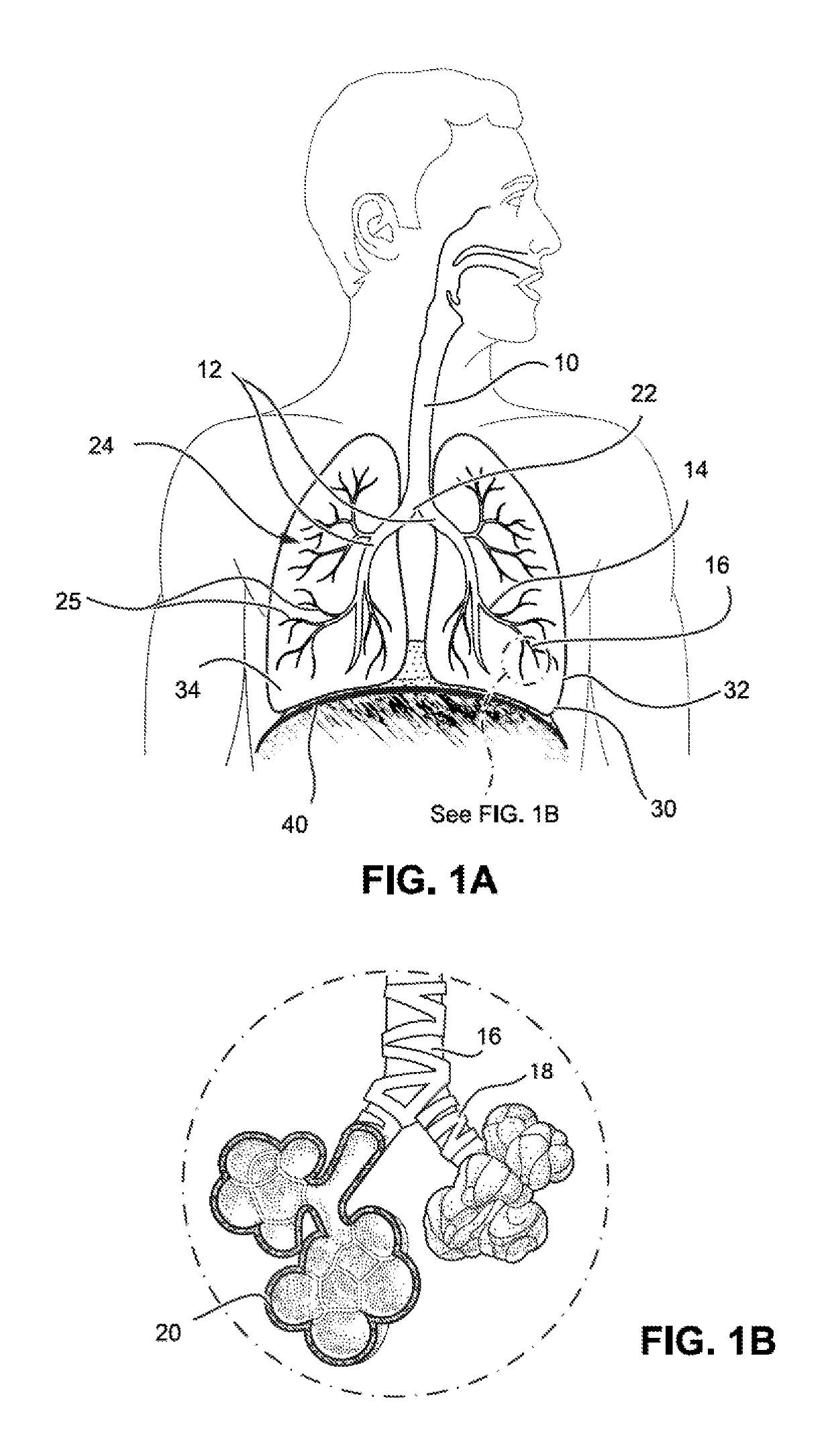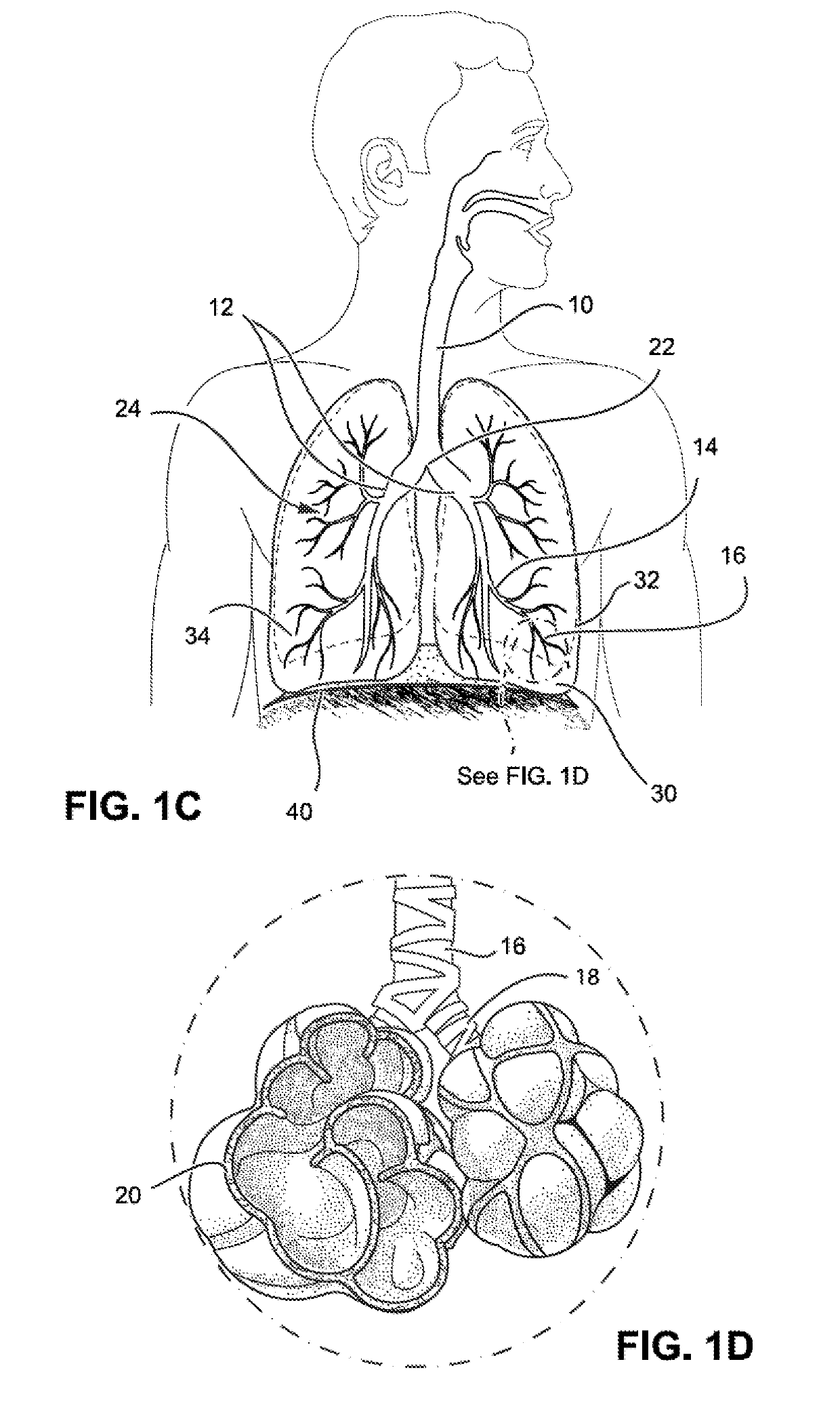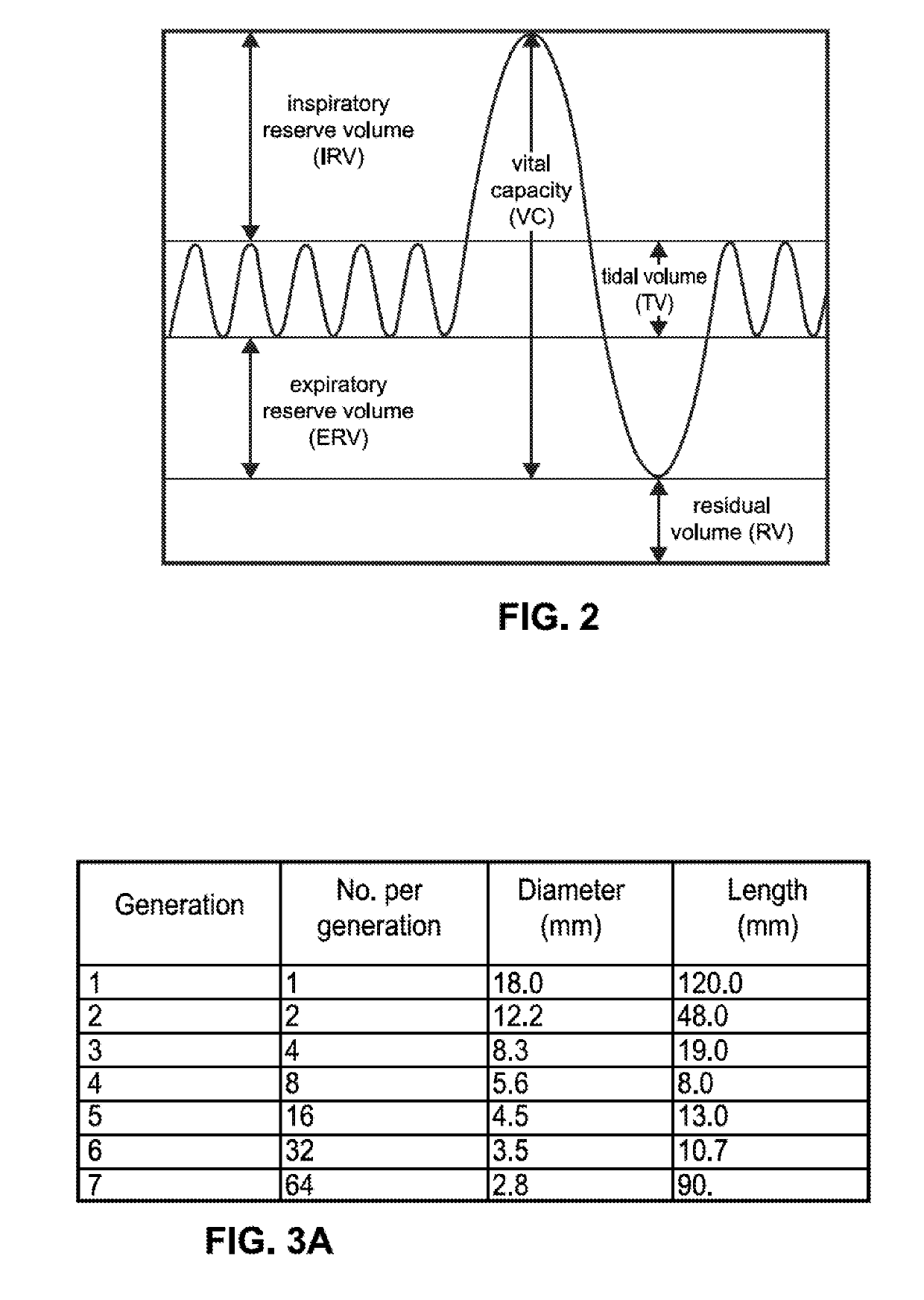Methods and devices for the treatment of pulmonary disorders
a technology for pulmonary disorders and pulmonary artery disease, applied in the field of can solve the problems of existing lung artery reduction devices, devices that do not represent optimal solutions for lung artery reduction, and devices that have yet to enter widespread use, so as to reduce the risk of device implantation, increase the potential speed of device placement, and reduce the effect of arm bias
- Summary
- Abstract
- Description
- Claims
- Application Information
AI Technical Summary
Benefits of technology
Problems solved by technology
Method used
Image
Examples
Embodiment Construction
[0079]FIGS. 1A, 1B, 1C and 1D illustrate the respiratory system located primarily within the thoracic cavity. In human beings, the lungs 30 are present in pairs and are located in the pleural cavities of the thorax on either side of the heart. The lungs are separated from the abdominal cavity by the muscular thoracic diaphragm 40, which expands and contracts to facilitate breathing The lungs 30 of a typical adult human are about 25 to 30 cm long and are approximately cone shaped. A protective membrane, called the pulmonary or visceral pleura, protects the lungs and separates each lung from the parietal pleura, which covers the chest wall, by the thin layer of pleural fluid. The lungs are separated by the mediastinum, which contains the heart, trachea, esophagus and blood vessels. The lungs normally have clear anatomical divisions known as lobes. The right lung 34 is divided into three lobes called superior, middle and inferior lobes, by the oblique and horizontal fissures that are f...
PUM
 Login to View More
Login to View More Abstract
Description
Claims
Application Information
 Login to View More
Login to View More - R&D
- Intellectual Property
- Life Sciences
- Materials
- Tech Scout
- Unparalleled Data Quality
- Higher Quality Content
- 60% Fewer Hallucinations
Browse by: Latest US Patents, China's latest patents, Technical Efficacy Thesaurus, Application Domain, Technology Topic, Popular Technical Reports.
© 2025 PatSnap. All rights reserved.Legal|Privacy policy|Modern Slavery Act Transparency Statement|Sitemap|About US| Contact US: help@patsnap.com



